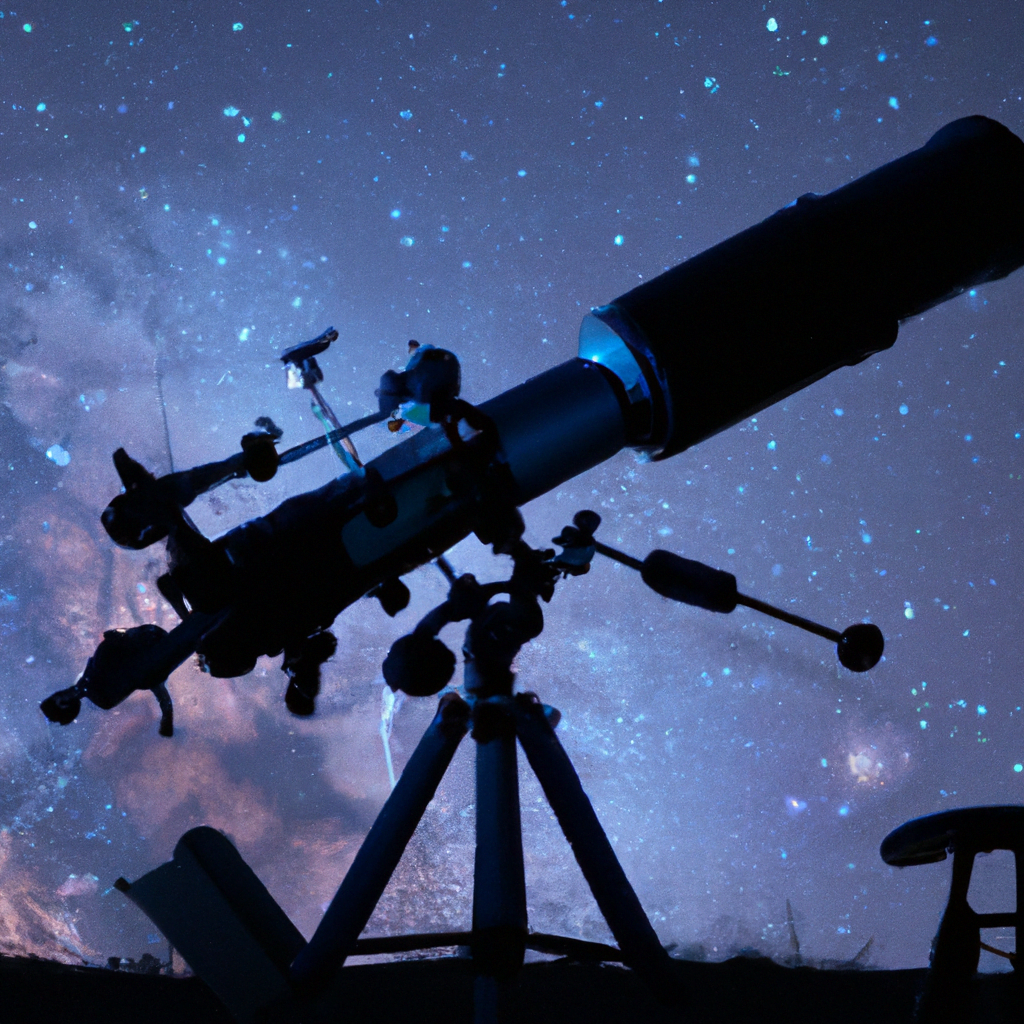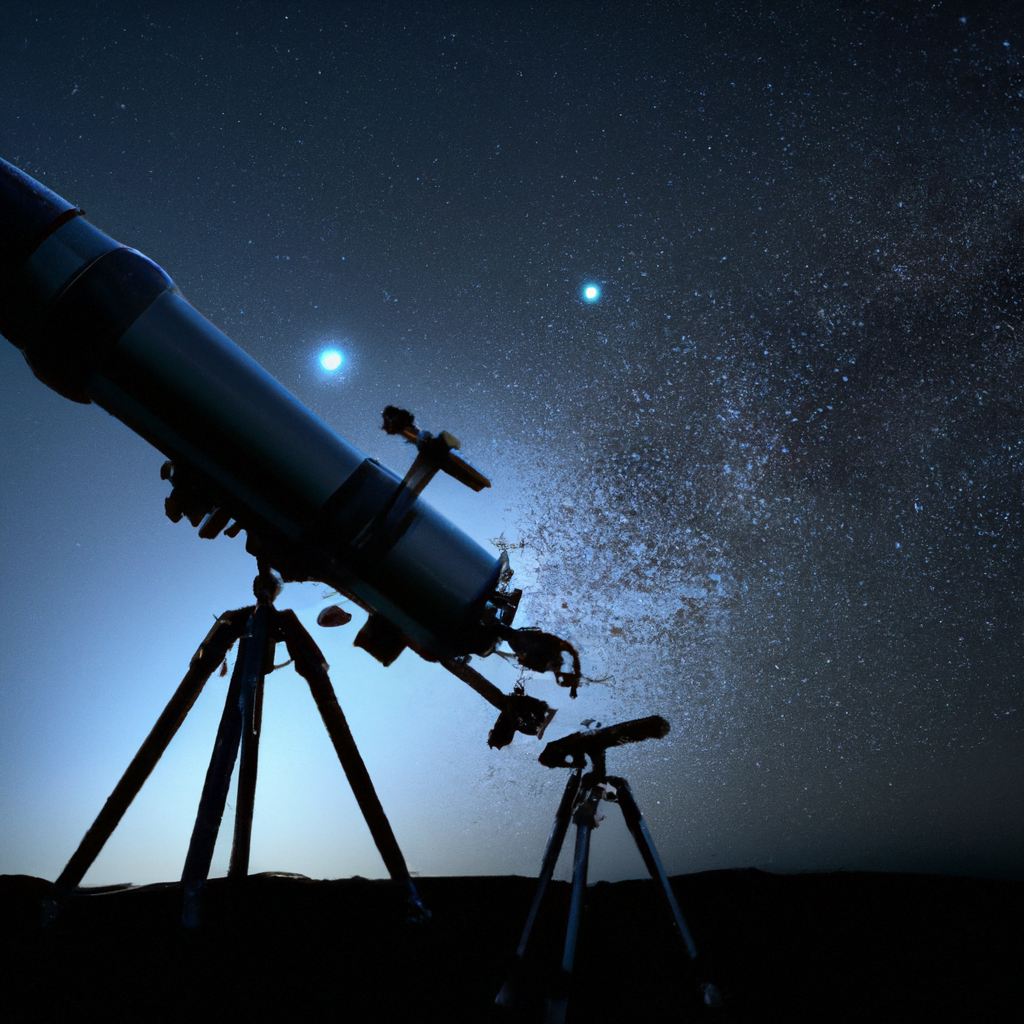If you’re a budding stargazer eager to explore the mysteries of the universe, you may find yourself wondering, “Can I see planets clearly with a basic telescope?” As you peer through the lens of a telescope, the thought of glimpsing distant planets like Jupiter or Saturn becomes an enchanting possibility. In this article, we’ll embark on a cosmic journey to uncover the answer to this pressing question. So grab your telescope and let’s voyage into the celestial realm together.
Table of Contents
Factors Affecting Visibility
When it comes to observing celestial objects such as planets, several factors can significantly impact visibility. Understanding these factors can help you make the most out of your observing experience.
Telescope Power and Magnification
The power and magnification of your telescope play a crucial role in determining how clearly you can see planets. Higher power and magnification allow for a closer look at the details on the surface of the planets. However, it’s important to note that excessive magnification can result in a smaller field of view and reduced image brightness. Finding the right balance is key to achieve clear planet observation.
Aperture Size
The aperture size of a telescope refers to the diameter of its primary lens or mirror. A larger aperture allows for more light to enter the telescope, resulting in brighter and sharper images. For planetary observation, a larger aperture is beneficial as it enables you to see more detail on the surface of the planets. Therefore, choosing a telescope with a reasonably sized aperture is essential for clear visibility.
Lens Quality
The quality of the telescope’s lenses also affects the clarity of the observed planets. High-quality lenses minimize optical aberrations and provide sharper and more accurate images. When selecting a telescope, consider investing in one with superior lens quality to ensure optimal visibility of planets.
Environmental Conditions
Environmental conditions can have a significant impact on visibility. Factors such as light pollution, atmospheric turbulence, and weather conditions can affect the clarity of planets. Observing from a dark and clear location away from city lights will provide the best conditions for observing planets. Additionally, stable weather conditions with minimal atmospheric disturbances will further enhance visibility.

Choosing the Right Telescope
Choosing the right telescope is crucial for a rewarding planet observation experience. Here are some factors to consider when selecting a telescope:
Power and Magnification
Consider the power and magnification capabilities of the telescope. As previously mentioned, higher power and magnification can offer a closer look at planetary details. Look for a telescope that allows you to adjust the magnification according to your observing needs.
Aperture Size
Opt for a telescope with an appropriate aperture size. A larger aperture will provide better visibility of planets, allowing you to see more detail. However, keep in mind that larger apertures often come with larger and more cumbersome telescopes. Consider your portability needs before deciding on the ideal aperture size.
Lens Quality
Ensure that the telescope you choose has high-quality lenses or mirrors. Top-notch lens quality will contribute to clearer and more accurate images of planets.
Portability
Consider the portability of the telescope, especially if you plan to take it to different observing locations. If ease of transportation is important to you, opt for a telescope that is lightweight and compact.
Durability
Invest in a telescope that is built to withstand different weather conditions and rough handling. Durability is important, especially if you plan on taking your telescope on outdoor adventures.

Tips for Clear Planet Observation
To ensure clear planet observation, there are a few tips you can follow:
Time and Location
Choose the right time and location for observing planets. For optimal visibility, aim for a time when the planets are high in the sky and away from the horizon. Additionally, try to observe from a location with minimal light pollution, as this will significantly enhance visibility.
Weather Conditions
Check the weather forecast before heading out for planet observation. Clear skies free of clouds and atmospheric disturbances are ideal for obtaining clear views of planets. Avoid observing on nights with heavy cloud cover or during poor weather conditions.
Observation Techniques
Use proper observation techniques to maximize visibility. Allow your eyes time to adjust to the darkness to improve your ability to see faint details. Additionally, experiment with different eyepiece filters to enhance the contrast and visibility of specific planetary features.
Using Filters
Consider using filters to enhance planet observation. Different filters can help increase contrast and reduce glare, improving the visibility of specific planetary features. Experiment with different filters to find the ones that work best for the planets you wish to observe.

Commonly Observed Planets
There are several planets in our solar system that are frequently observed by amateur astronomers. Here are some notable ones:
Mercury
Mercury is the closest planet to the sun and can be elusive to observe due to its proximity to the sun. However, with the right conditions and timing, it is possible to observe this small and rocky planet.
Venus
Venus is one of the brightest objects in the night sky and is often referred to as the “evening star” or “morning star.” Its proximity to Earth makes it easily observable, and its phases can be seen through a telescope.
Mars
Known as the “Red Planet,” Mars has been of great interest to astronomers for centuries. Observing Mars allows you to see its distinctive reddish color and sometimes even its polar ice caps.
Jupiter
Jupiter is the largest planet in our solar system and is known for its characteristic bands of clouds and the Great Red Spot, a massive storm system. Observing Jupiter can provide a fascinating view of its prominent features and its four largest moons.
Saturn
Saturn, with its iconic rings, is a favorite among astronomers. Observing Saturn allows for a mesmerizing view of its ring system, as well as its largest moon, Titan.
Uranus
Uranus is an ice giant planet that is challenging to observe due to its faint appearance. However, with a telescope, it is possible to see its pale blue-green color and potentially detect some of its moons.
Neptune
Neptune, another ice giant planet, is located farthest from the sun in our solar system. Observing Neptune can be challenging due to its distance, but with the right equipment and conditions, it is possible to see its bluish hue.

Other Celestial Objects to Observe
In addition to planets, there are several other celestial objects that can be observed using a telescope:
The Moon
The Moon is the closest celestial object to Earth and offers stunning details when observed through a telescope. Observing the Moon allows for a close-up view of its craters, mountains, and even its maria.
Star Clusters
Star clusters are groups of stars that are gravitationally bound and are scattered throughout our galaxy. Open clusters and globular clusters are popular choices for observation, as they showcase the beauty and diversity of stars in our universe.
Nebulas and Galaxies
Nebulas and galaxies offer a glimpse into the vastness of the universe. These celestial objects are often characterized by their vibrant colors and intricate structures. Observing nebulae, such as the Orion Nebula, or galaxies, such as the Andromeda Galaxy, can be awe-inspiring experiences.
In conclusion, while a basic telescope may have limitations, it is still possible to observe planets clearly with the right techniques, equipment, and environmental conditions. By considering factors such as telescope power, aperture size, lens quality, and environmental conditions, you can enhance visibility and have a rewarding planet observation experience. Remember to choose the right telescope, follow helpful observation tips, and explore other celestial objects to make the most of your astronomy adventures. So go ahead, grab your telescope, and embark on a journey to explore our fascinating solar system and beyond!

